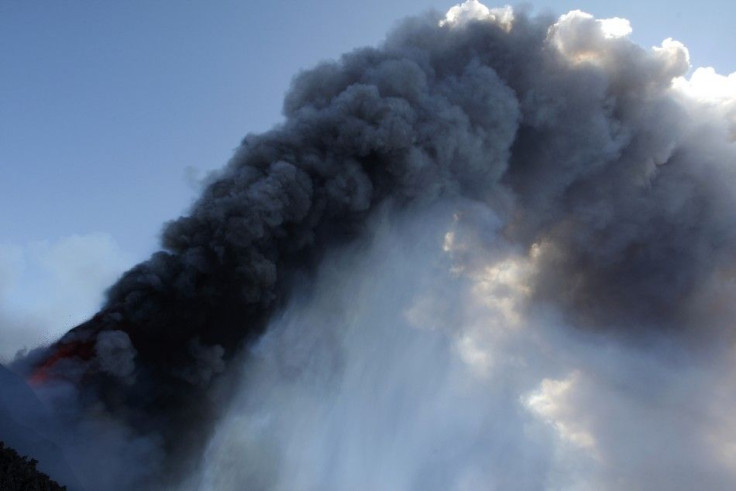Man-Made Volcano to be Created in Climate Change Experiment

A new addition to England's landscape is in the making as scientists are preparing to build a giant balloon in an experiment that seeks to re-create the cooling effect of erupting volcanos.
The experiment will start with scientists attaching large helium filled balloons to 1km of hosepipes, but eventually Engineers from the university of Bristol aim to use balloon the size of Wembley Stadium in an investigation towards the development of climate engineering.
The $2.5 million project called Stratospheric Particle Injection for Climate Engineering (SPICE), is already underway and set to launch next month.
Once the balloons and pipes are put into place at a disused Norfolk airfield, scientists will attempt to pump water up a hose suspended one kilometer off the ground beneath a helium-filled balloon.
According to the scientists light-scattering particles that are pumped high into the atmosphere have a cooling effect on the Earth as they reflect the sun's rays. They aim to create a similar effect to that of a volcanic eruption which can have an impact on cooling the planet.
The study carried out by the universities of Bristol, Cambridge and Oxford, together with those from Marshall Aerospace has found that Particles of clay, salts or metallic oxides suspended in liquid have more of a cooling effect than sulphates produced by real volcanoes.
The launch that will take place next month is the first of its kind in the UK, and while it is a test run raising the balloon to a height of 1km, engineers hope to raise this to 20km in future experiments.
The method of building artificial volcanoes is seen as a last resort, if carbon emissions cannot be taken under control.
'We are still decades away from doing this and it's not simply a science decision,'' said one of the scientists, Dr. Matt Watson from the University of Bristol speaking at the British Science Festival at. ''There are ethical and governmental decisions around this that are huge. Just because we can do it doesn't mean that we have the right to do it.''
The pipes are likely to be sited are out to sea. To pump water to one kilometer you need a pressure of 100 bars. When we start thinking about 20 kilometers we're talking about 4,000 bar of pressure. You don't get that kind of pressure at B&Q, said Dr. Hugh Hunt, from Cambridge University, who will head the Sculthorpe test.
Large volcano eruptions in the past have proved to have a significant impact on decreasing global temperatures. The eruption of Mount Pinatubo in the Philippines in 1991 decreased the earth's average temperature by 0.5 degrees Celsius over two years.
This was as a result of aerosols reflecting back the sun's radiation before it reached the atmosphere. SPICE will investigate the effectiveness of stratospheric particle injection, evaluating the best candidate particle and its ideal quantity, delivery method, and likely impacts of the injection.
© Copyright IBTimes 2024. All rights reserved.





















